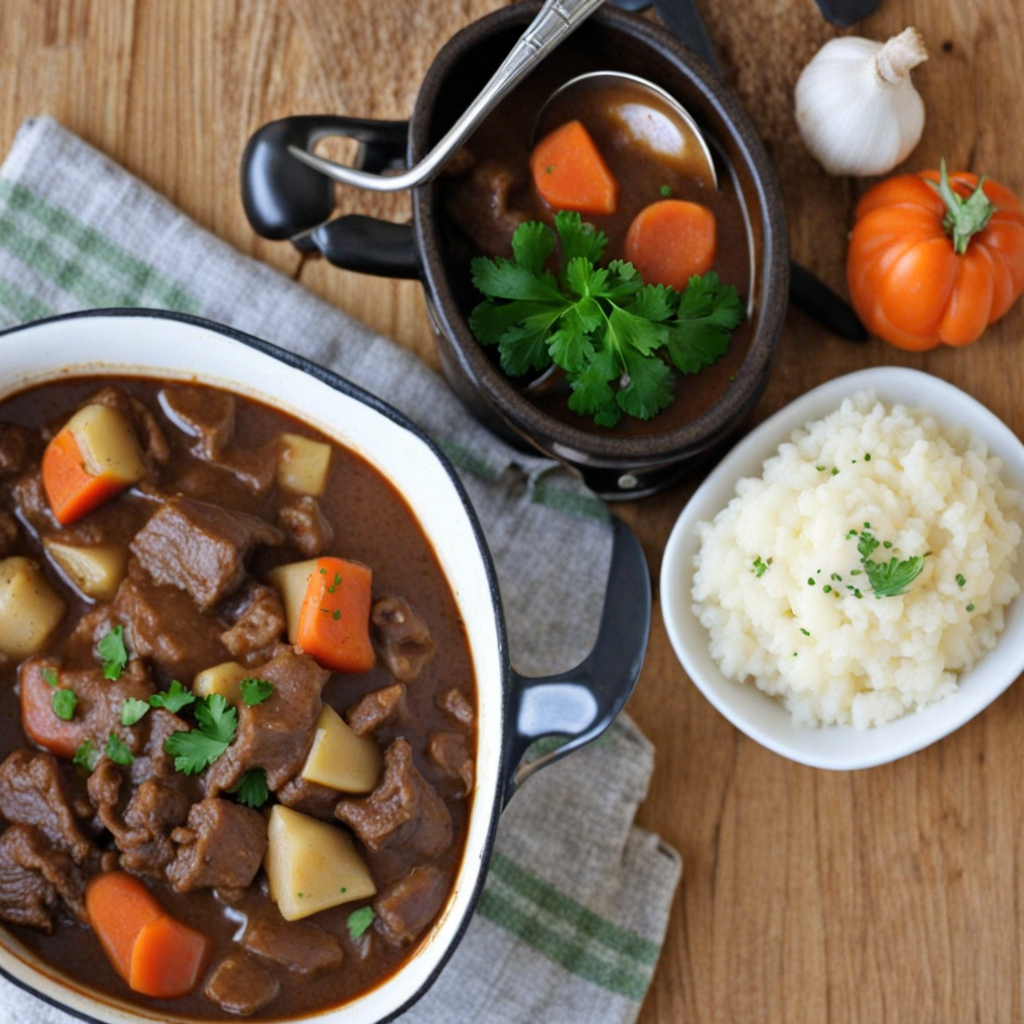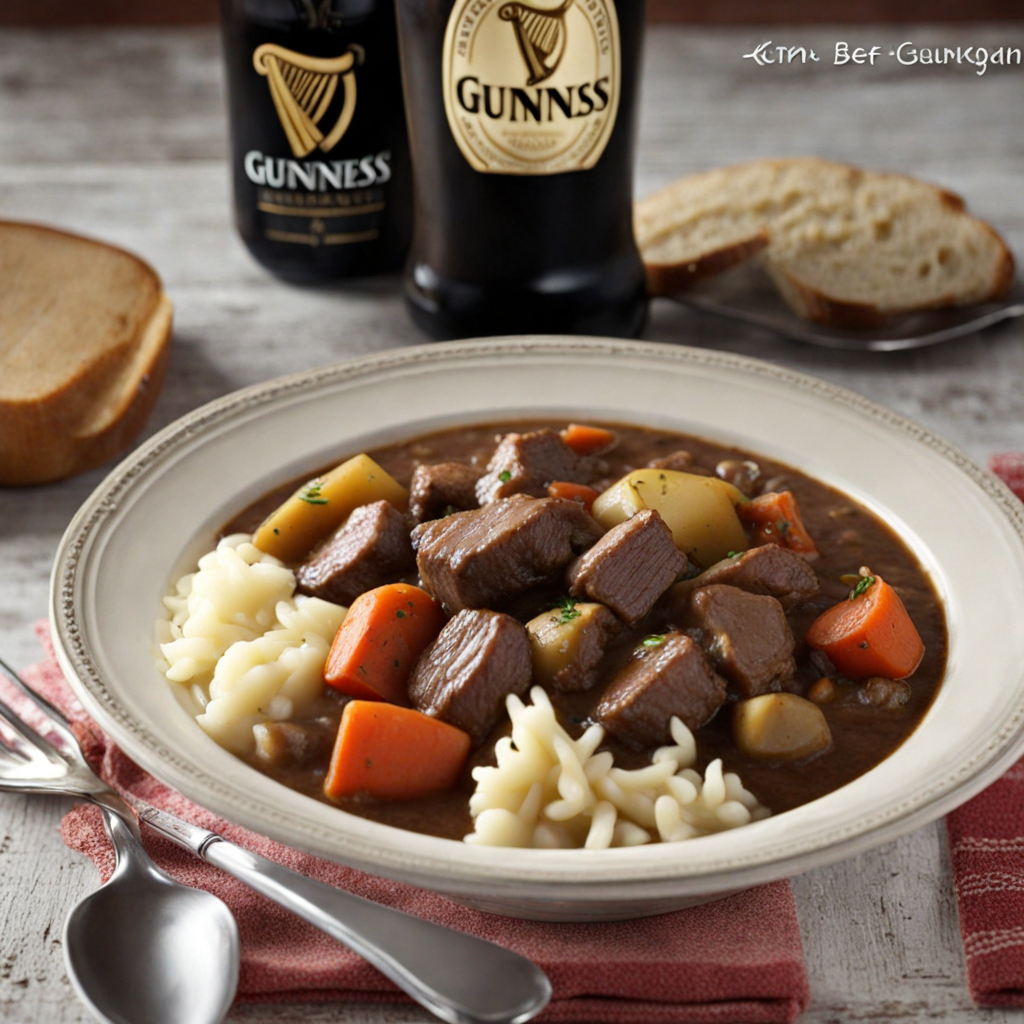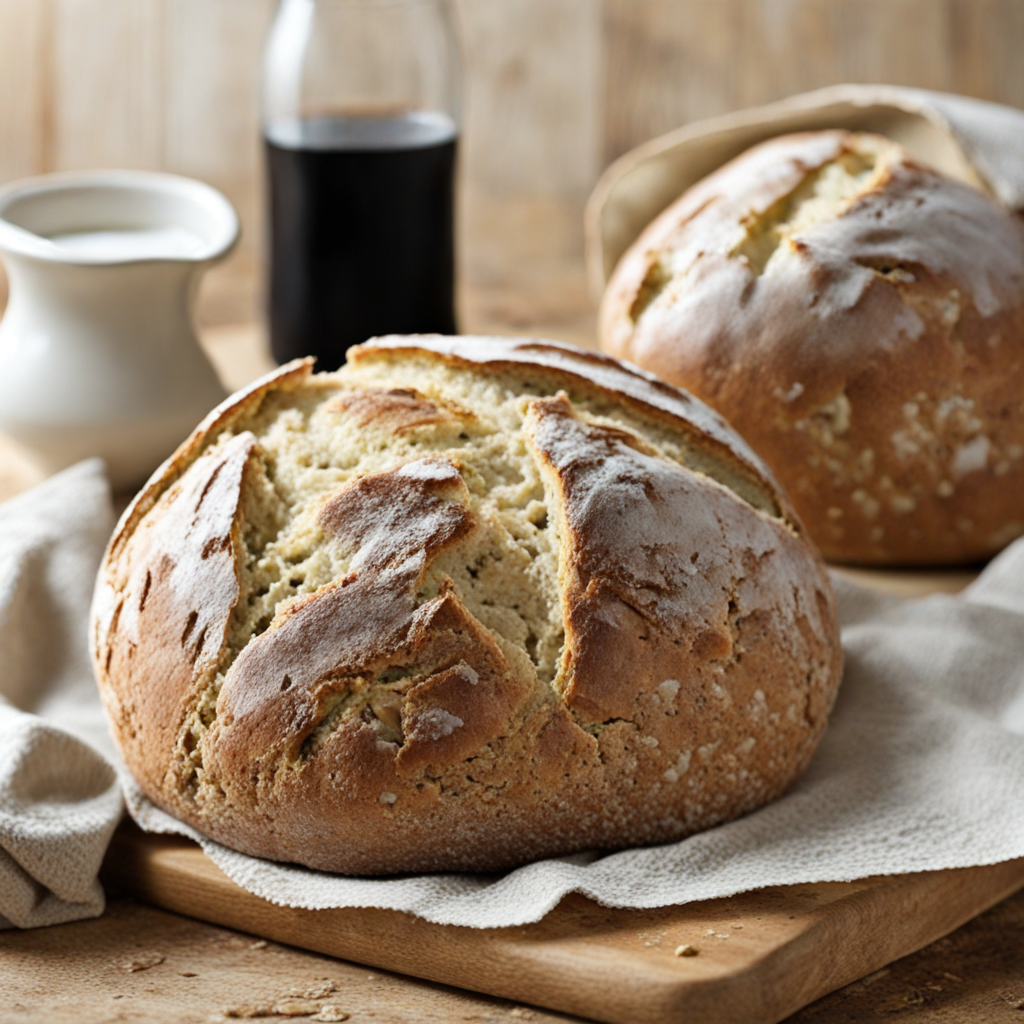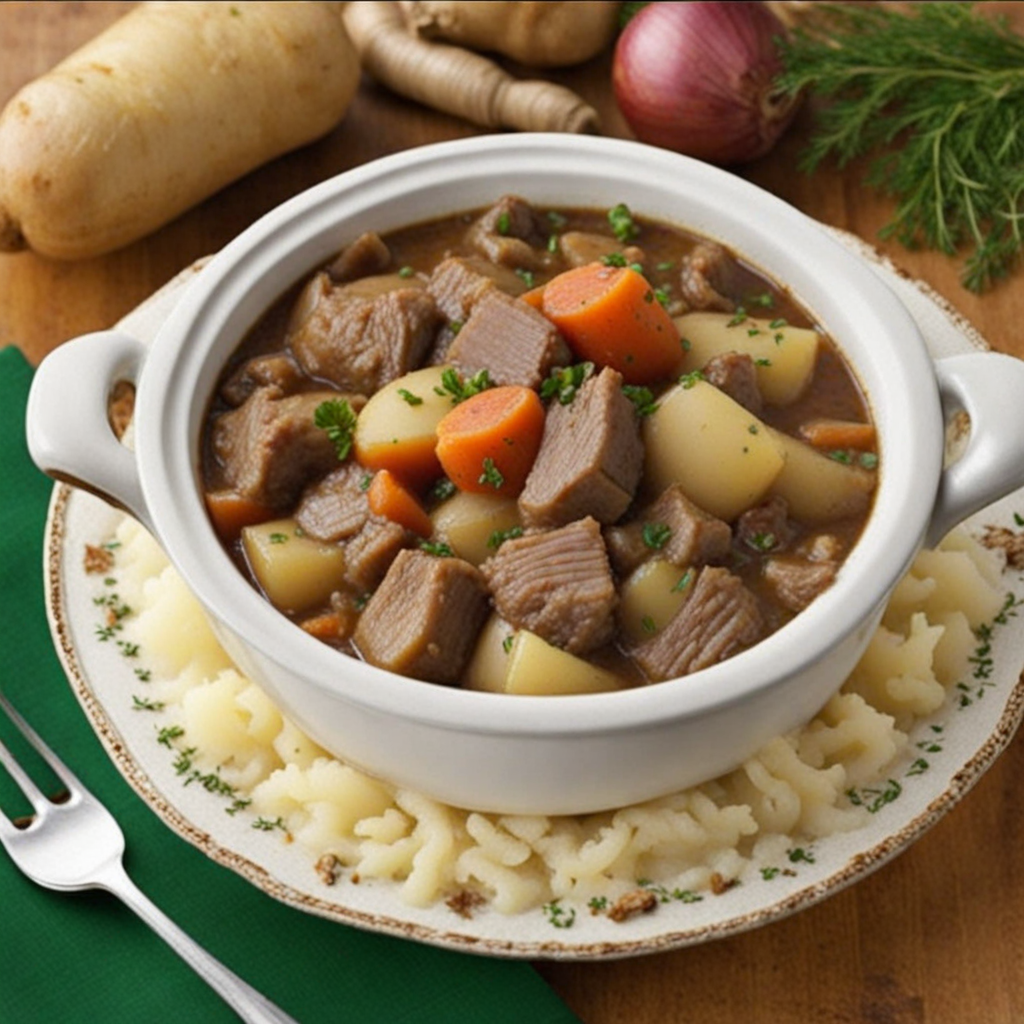Guinness Stew
Guinness Stew is a hearty and flavorful dish that hails from the lush landscapes of Ireland, where the rich cultural heritage is deeply intertwined with its culinary traditions. This delightful stew features tender chunks of beef, slow-cooked to perfection, that meld beautifully with the robust flavors of Ireland's famous dark stout, Guinness. The beer not only enhances the depth of flavor but also contributes a subtle sweetness and a velvety texture that elevates the dish to new heights. Accompanying the beef are a medley of fresh vegetables, typically including carrots, potatoes, and onions, all simmered together to create a comforting and satisfying meal that warms the soul. The preparation of Guinness Stew is relatively straightforward, making it an ideal dish for both novice cooks and seasoned chefs alike. The process begins with browning the beef to lock in the juices, followed by the addition of the vegetables and a generous pour of Guinness. As the stew bubbles away, the aromas of thyme, bay leaves, and garlic begin to waft through the kitchen, promising a delightful dining experience. It is traditionally served with crusty bread, perfect for dipping and soaking up the rich, savory sauce that results from the slow cooking process. As you take your first spoonful of Guinness Stew, you'll be greeted by a symphony of flavors that dance on your palate. The tender meat practically melts in your mouth, complemented by the earthy sweetness of the vegetables and the hint of bitterness from the stout. Each bite carries with it a taste of Ireland's rugged landscape and the warmth of its hospitality. Whether enjoyed on a chilly evening or shared with friends at a gathering, Guinness Stew is not just a meal; it is an experience that transports you to the heart of Irish culture and tradition.
How It Became This Dish
Origin of Stobhach Guinness Stobhach Guinness, often simply referred to as "Stobhach," is a traditional Irish stew that draws its name from the Irish word "stobhach," meaning "stew." This hearty dish is deeply rooted in Irish culinary history, reflecting the rural lifestyle and agricultural practices of the Emerald Isle. While the exact origins are difficult to pinpoint, it is widely believed that Stobhach Guinness emerged in the 19th century, coinciding with the rise of Guinness beer as a staple in Irish pubs and homes. The dish typically features a rich combination of ingredients, including lamb or beef, root vegetables such as potatoes, carrots, and onions, and, of course, a generous addition of Guinness stout. The use of this iconic Irish beer not only enhances the flavor of the stew but also adds a depth of richness and a characteristic dark color. The incorporation of Guinness represents a significant cultural shift during the 19th century, as the drink became synonymous with Irish identity and community. \n Cultural Significance Stobhach Guinness is more than just a meal; it is a cultural emblem of Ireland. The stew embodies the spirit of Irish hospitality, often served during family gatherings and festive occasions. It represents the warmth and togetherness of the Irish people, providing sustenance and comfort, especially during the cold, damp winters. Food in Ireland has always been a source of pride and identity, and Stobhach Guinness is emblematic of the resourcefulness of Irish cooks who made the most of seasonal ingredients and available resources. Moreover, the dish has gained recognition beyond Ireland's borders, often associated with Irish pubs and cultural celebrations worldwide. During events like St. Patrick's Day, it is common to find Stobhach being served in pubs and restaurants, further solidifying its status as a symbol of Irish culture and cuisine. The stew is not just a meal; it is a medium for storytelling, with each family often having its own recipe or variation that reflects personal history and regional influences. \n Development Over Time As Irish cuisine evolved, so too did Stobhach Guinness. While the traditional version remains popular, contemporary interpretations have emerged, reflecting modern tastes and dietary preferences. Chefs and home cooks alike have started experimenting with ingredients, substituting lamb for beef or adding different vegetables and herbs to enhance flavor and nutrition. Some variations even incorporate additional spices or other types of stout, showcasing the adaptability of this beloved dish. In recent years, the resurgence of interest in traditional Irish cooking has led to a revival of Stobhach Guinness in both homes and restaurants. The food movement, which emphasizes local sourcing and sustainable practices, aligns perfectly with the ethos of Stobhach. Many chefs now prioritize using seasonal, locally sourced ingredients to create their versions of this classic stew, paying homage to its roots while also embracing modern culinary techniques. \n Stobhach Guinness in Contemporary Ireland In contemporary Ireland, Stobhach Guinness has found a place not only in homes but also on the menus of many gastropubs and restaurants that celebrate traditional Irish fare. These establishments often aim to provide an authentic culinary experience, marrying traditional recipes with innovative cooking styles. Stobhach's rich, robust flavor profile makes it an ideal pairing with various sides, such as homemade brown bread or traditional soda bread, enhancing its appeal. Furthermore, the dish has become a canvas for chefs to showcase their creativity, leading to the development of gourmet versions that incorporate international flavors or modern plating techniques. These interpretations maintain the essence of Stobhach while appealing to a broader audience, including those who may not be familiar with traditional Irish cuisine. The dish continues to foster a sense of community, as it is often shared among friends and families, reinforcing bonds and creating lasting memories. \n Global Influence and Popularity The global reach of Stobhach Guinness can be attributed in part to the Irish diaspora, which has shared the dish across continents, particularly in countries such as the United States, Canada, Australia, and the United Kingdom. In many Irish-American communities, Stobhach Guinness has become a staple, often served during family gatherings and celebrations, thus perpetuating its legacy and cultural significance. Irish pubs around the world have embraced Stobhach, adding it to their menus as a way to attract patrons looking for an authentic taste of Ireland. Food festivals celebrating Irish culture often feature Stobhach Guinness, showcasing its versatility and widespread appeal. This popularity has led to various food competitions and cooking shows where chefs are encouraged to put their unique spin on this time-honored dish, further solidifying its status in both traditional and modern culinary landscapes. \n Conclusion Stobhach Guinness stands as a testament to the rich culinary heritage of Ireland, embodying the simplicity and heartiness of traditional Irish cooking. As the dish continues to evolve, it retains its core characteristics that make it a beloved staple in Irish households and beyond. Whether enjoyed in a traditional form or a contemporary interpretation, Stobhach Guinness serves as a delicious reminder of Ireland's agricultural roots, cultural identity, and the warmth of shared meals. Its enduring legacy is a reflection of not just Irish food, but the stories, traditions, and relationships that are built around the dining table.
You may like
Discover local flavors from Ireland







